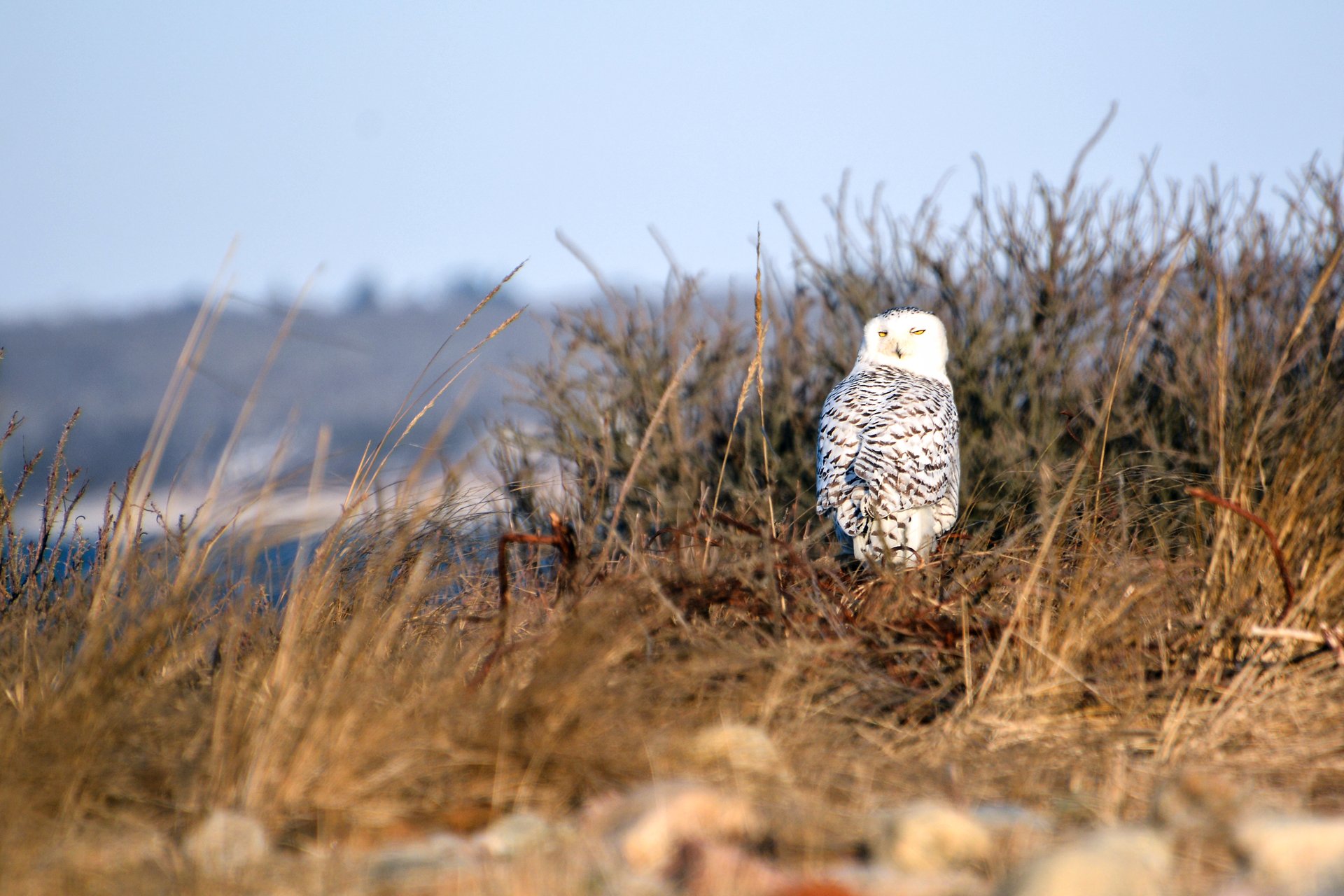5 Fast Facts About Snowy Owls
November 17, 2023
Every fall Snowy Owls make their way down from the Arctic to overwinter here in Massachusetts usually in November. They’ll remain here in open spaces, like large salt marshes and agricultural fields, until around April when they’ll head back north to their breeding grounds.
These birds are truly fascinating. How much do you know about them? Learn some fun facts about Snowy Owls, then share them with your friends!
Snowy Owl Facts
- Snowy Owls are the heaviest owl species in North America. That’s because they need a large body mass and hefty amount of insulation from feathers to survive Arctic temperatures. Still, they’re not heavy by any means; these birds weigh only 3.25 to 6.5 pounds on average.
- Massachusetts has some popular sighting areas for Snowy Owls. These include Westport, New Bedford, Nantucket, Orleans, Duxbury Beach, Cranes Beach, Salisbury State Park, and Plum Island. (If you spot one, be sure to watch from a respectful distance!)
- Snowy Owls are considered an irruptive species. That means they respond to changes in the conditions of their home territory. Some owls have irruptive migrations due to a lack of food, while others move because abundant food has led to high productivity, resulting in more owls traveling south.
- Males are smaller and generally whiter than females and get whiter as they grow older. The females are larger, usually retaining some brownish and dark markings.
- The oldest-known wild Snowy Owl was at least 23 years, 10 months old when she was recaptured and released in 2015 during banding operations in Massachusetts.
Mass Audubon’s work protecting Snowy Owls dates back to 1981 when Norman Smith, former director of Mass Audubon's Blue Hills Trailside Museum, began banding Snowy Owls that he safely relocates from Boston Logan International Airport. Smith was the first to put transmitters on wintering Snowy Owls to track their movements and documented that some made it back to the Arctic.
Stay Connected
Don't miss a beat on all the ways you can get outdoors, celebrate nature, and get involved.



